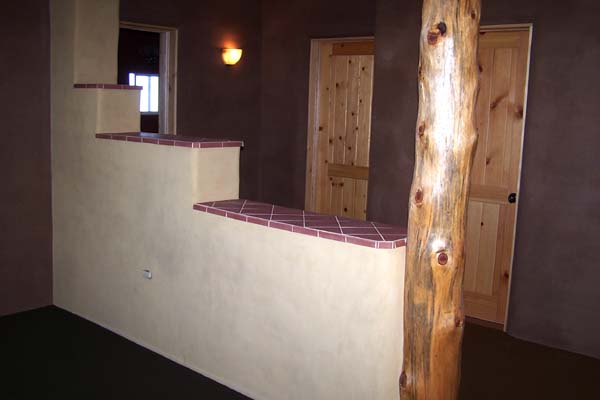Gold kaolin plasters and tinted mud floors add the final touch to this stepped down half-wall which separates the guest rooms from the living area. The mud floors, also known as adobe (or poured adobe) floors were given gold and green tints (as shown) to give some variety to the color scheme in the different areas of the house.
Rather than have the two different colored floors meet at the transition point, we chose to inlay a row of 6 inch tiles from one wall edge to another, which provided a nice, clean edge and allowed for a good transition between colors and materials.
The half-wall was plastered for its final coat, a fine kaolin plaster which was tinted gold. The fine sand and clay particles in a kaolin earthen plaster give walls almost a velvety feel and look and also provide a bit of sound proofing for a nice, quiet feel to any room.
As mentioned in previous images, the floors in this home are heated with in-floor radiant tubing which we buried in the base coat of mud, which is most often for most projects between three and four inches in depth. The in floor tubing then runs hot water, in this home, coming from the gas hot water heater. For a more energy efficient system, we suggest using hot water solar panels for radiant floor heating. In summer months when heat is not required (or desired) in the floor, the heat from the panels can be shifted to supplement the home hot water needs, saving on fuel.
When performing at it’s best, it is commonly known that in-floor radiant heating keeps both the house and the inhabitants quite possibly the most comfortable of all of the heating systems available. Having the feet warmed and a constant air temperature in any home in the winter is, speaking from our own experience, a wonderful thing.



